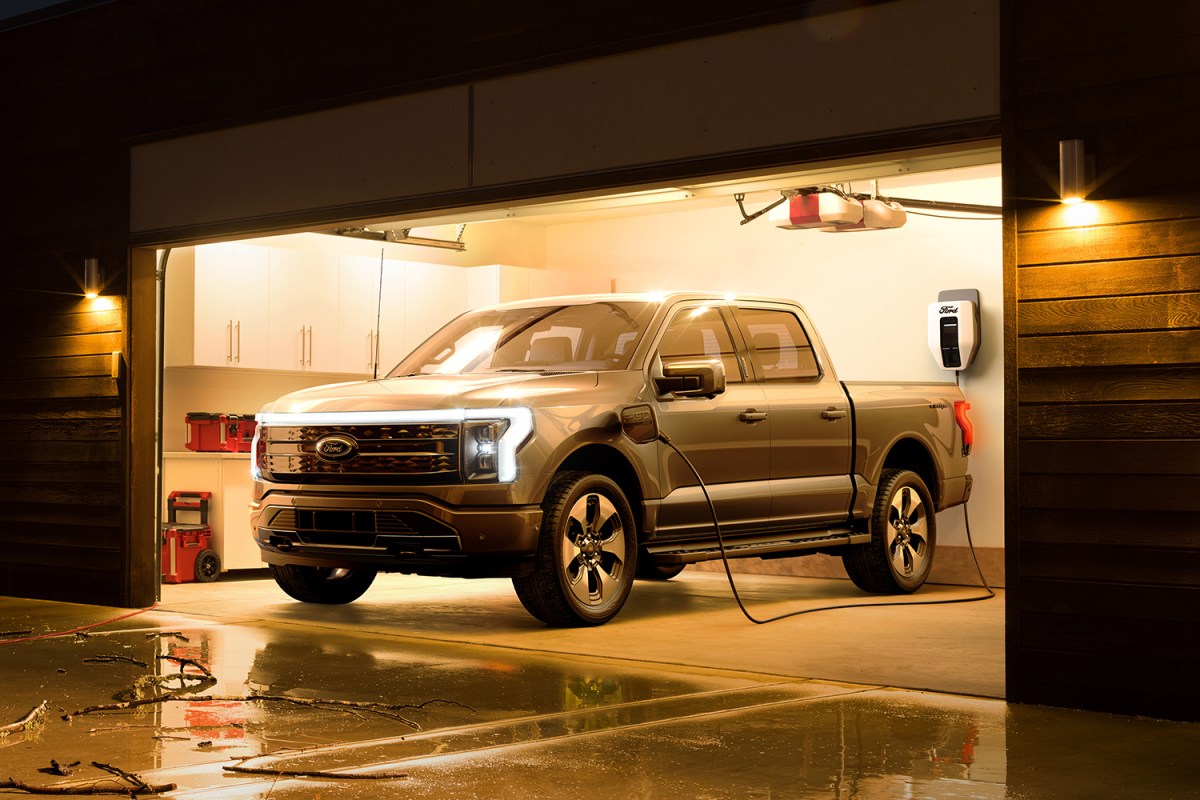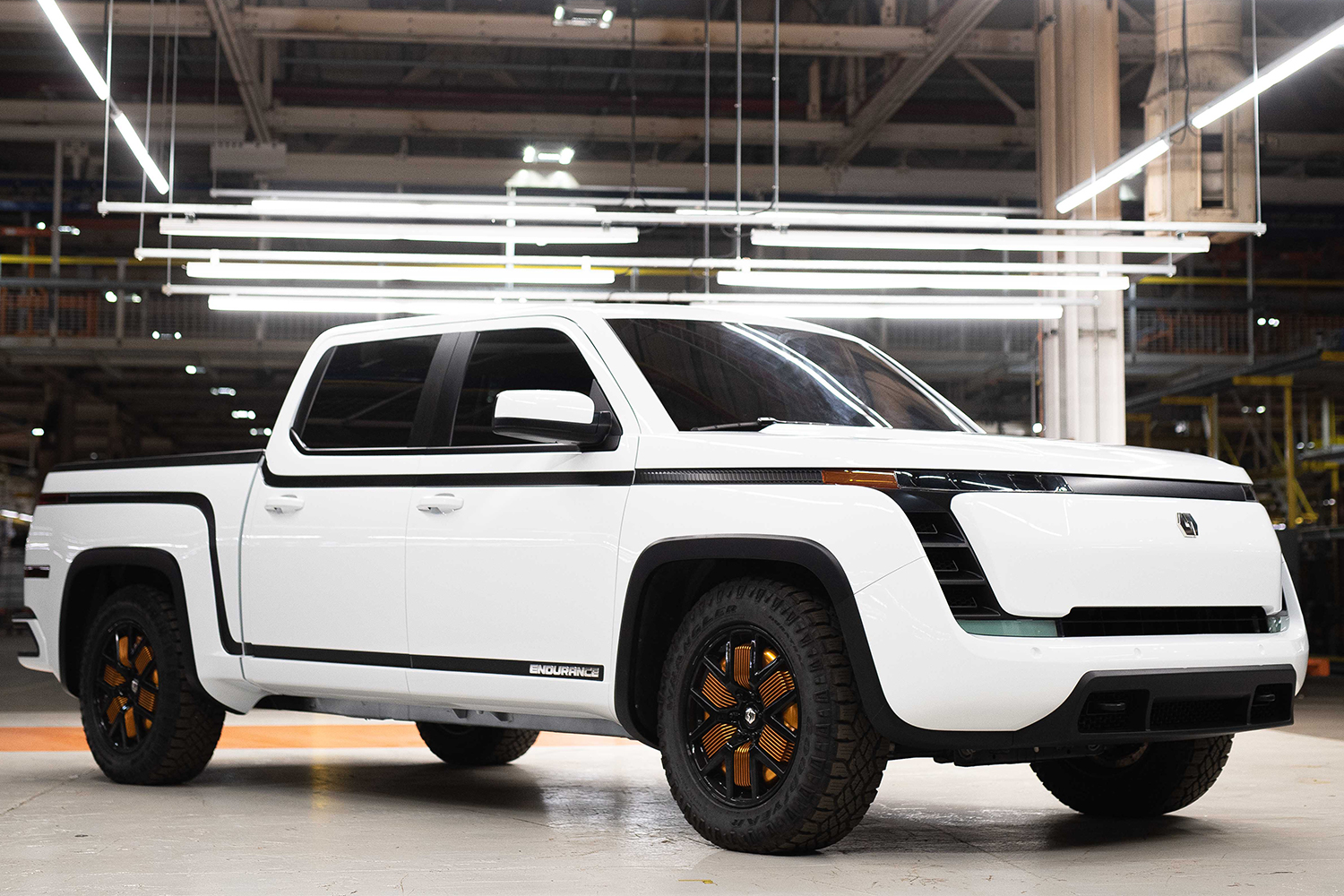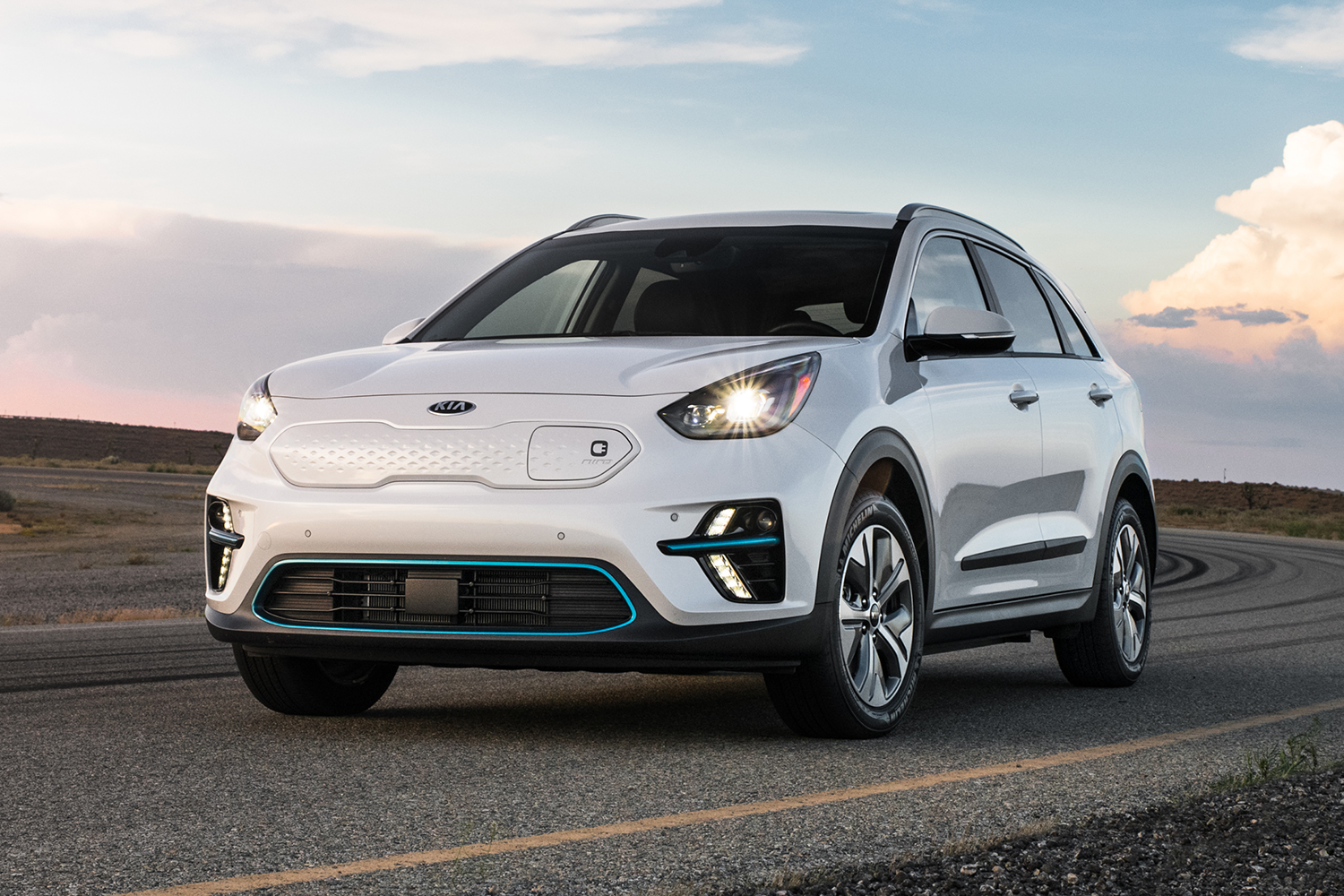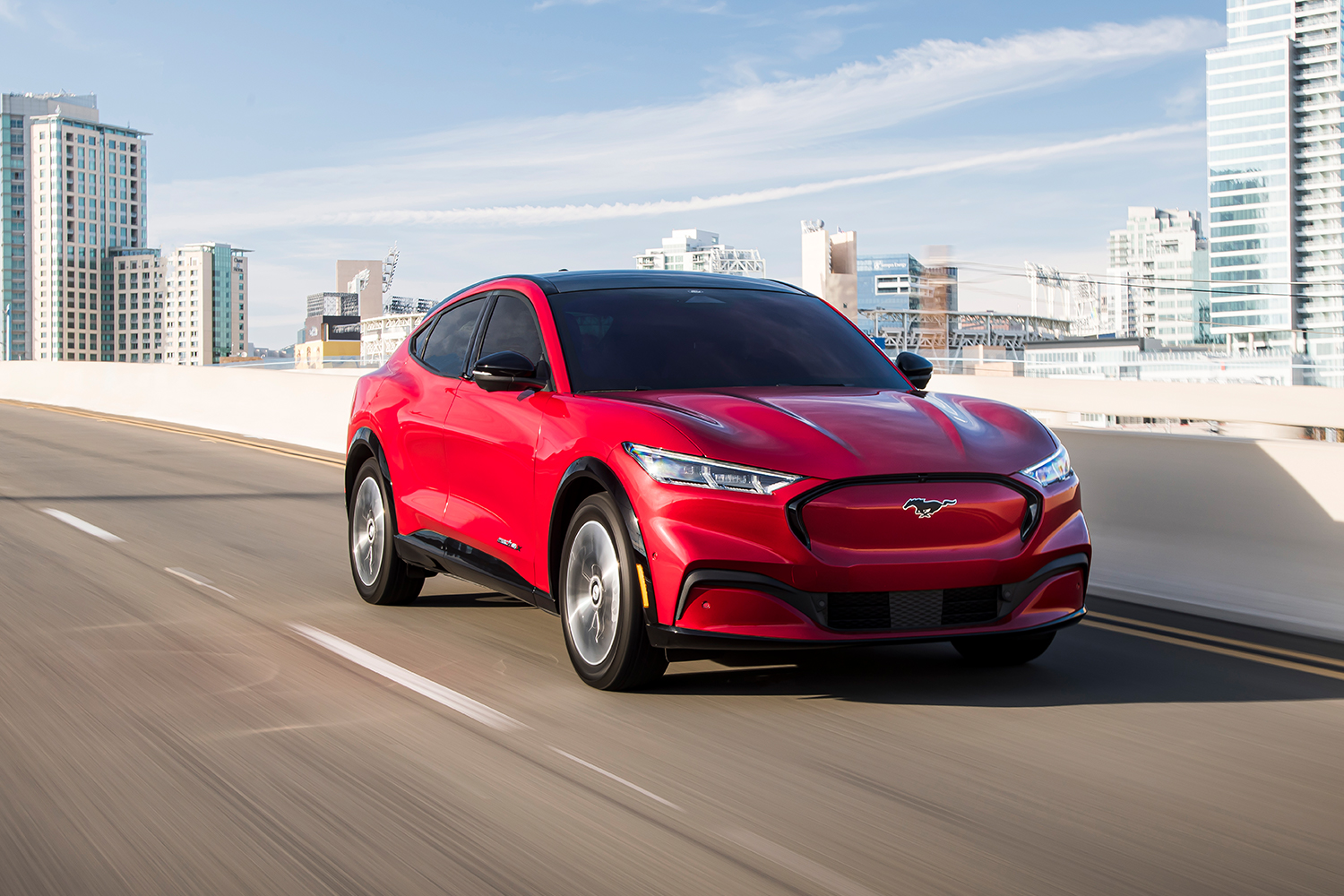On Wednesday night Ford officially unveiled the F-150 Lightning, the highly anticipated electric version of their F-Series truck. It’s a major milestone among EV pickups, a sector that has been delayed and continuously anticlimactic, but the livestream announcement felt vaguely familiar to previous reveals, with Ford touting the Lightning’s instant acceleration, quick 0-60 mph time and ginormous frunk, or front trunk (that’s where the engine used to be!). While all these features may be exciting to current truck owners who haven’t been paying attention to the auto industry’s increasing electrification, for EV followers, these are par for the course.
That’s seemingly all part of the game plan, though. The F-150 Lightning is a gigantic gamble for the automaker — trying to convince American buyers an EV is just as good if not better than the best-selling gas-powered truck of the last 40-some years — so in many respects other than the power source, Ford is playing it safe, familiar and comfortable.
“When we were designing the F-150 Lightning, our customers told us that they want something modern and advanced, but did not want their truck to look like a doorstop or a spaceship,” said Jasen Turnbull, the marketing manager for the vehicle. That’s a not-so-thinly veiled jab at Elon Musk’s Tesla Cybertruck, which does look like both of those things, but also some of the other EV trucks coming down the pipeline, like Rivian’s R1T, which will officially debut in June, that may be off-putting in their futuristic aesthetics to pickup buyers who prioritize utility over the latest technology. F-150 owners, according to Ford, can handle some changes, but not too many all at once.
One big change that most truck owners — and especially fleet buyers, which make up a large portion of pickup sales — likely can’t stomach is the huge price increase companies like Tesla and Rivian plan to charge for their electric trucks. For the Cybertruck, the current starting price is listed at $39,900 (though that’s for the single motor rear-wheel drive option; the cheapest all-wheel drive version starts at $49,900). For the R1T, the starting price is $67,500. But for the Lightning, it’s just $39,974 for the “commercial-oriented entry model” and $52,975 for the mid-series XLT, and that’s before any EV tax credits. That accessible price point, including the capability you get for it (up to 300 miles of range on one charge, payload capacity up to 2,000 lbs., towing up to 10,000 lbs.), will make all the difference.
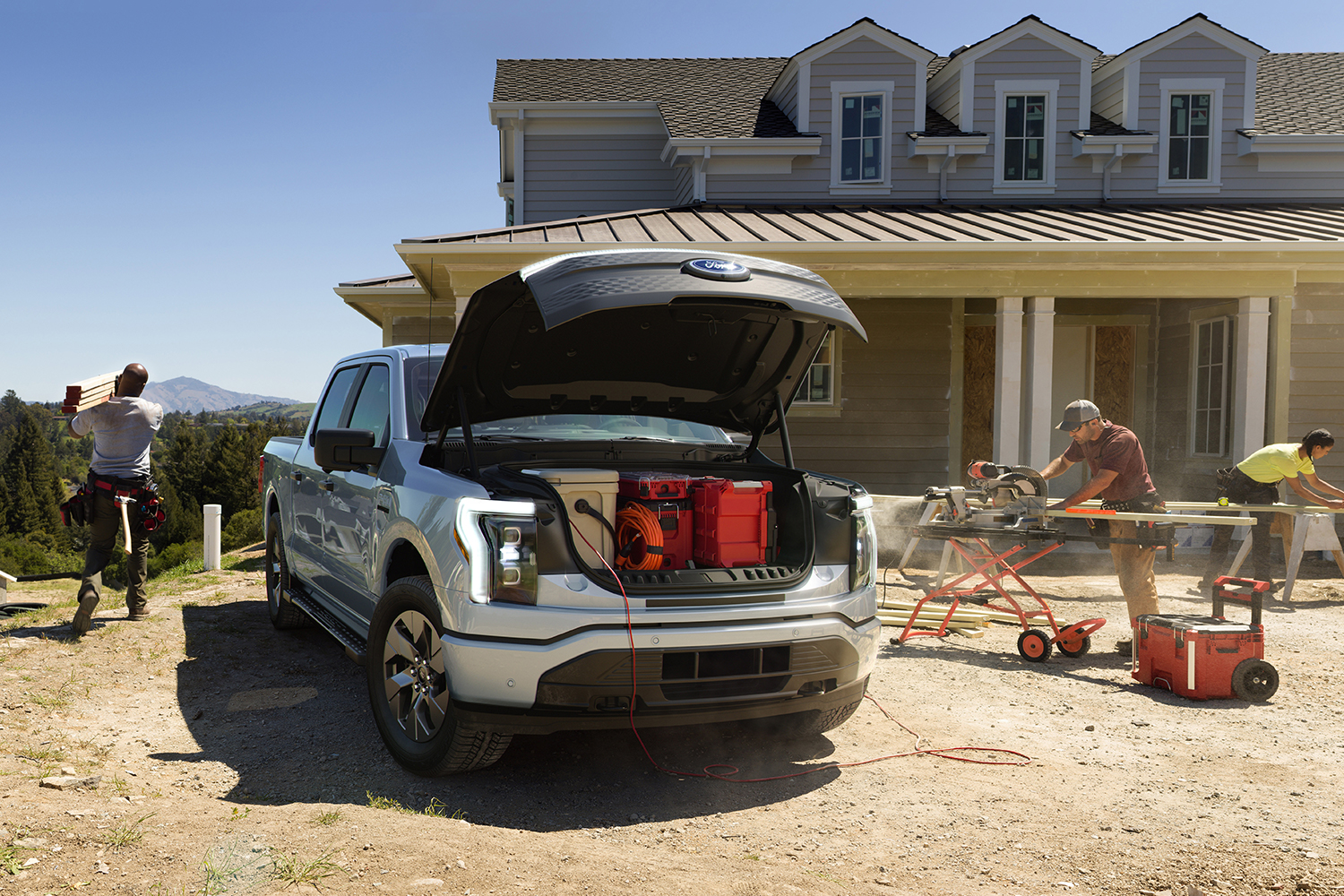
Take, for example, the fact that all models come with dual in-board motors and four-wheel drive, which isn’t the case with the Cybertruck. As for Rivian, it pitches its autos, including the R1S SUV, as premium electric “adventure vehicles,” which is a great selling point for a niche segment of the population, but most truck buyers probably aren’t ready to shell out $70,000 for their next pickup.
As new data from Kelley Blue Book showed this week, new vehicle prices are spiking, including full-size trucks, which saw an average 7 percent increase in transaction price between April 2020 and 2021, with the number now sitting at $55,664. And according to the Detroit Free Press, last summer the average cost of the F-Series was $51,585. The base model of the new electric Lightning is not a luxury vehicle, unlike many of the other EV trucks that have been announced, and accordingly the price falls far below that, and even the mid-series XLT sits comfortably in that average truck range, even though up till now those prices have all been associated with old-school gas models.
“[The Lightning] offers value you’d expect from a Ford, targeting pricing for the masses and lowering total cost of ownership for many,” said Kumar Galhotra, president of Americans and International Markets Group at Ford.
That lower total cost of ownership is a reference to the fact that filling your vehicle up with electricity instead of gas can save drivers a significant amount of money, especially in the long run. That’s another element that both individual truck owners and fleet buyers will find enticing once they actually do the cost-benefit analysis between the Lightning and the traditional F-150, as well as the offerings from other brands.
The Lightning still has a ways to go before it proves itself, of course. While it is currently available for reservation for $100, deliveries won’t begin until spring 2022. That will have it playing catch up on the road to Rivian, which is set to begin deliveries in June along with its official debut, and the Cybertruck, which is apparently still planning on starting production late this year.
This is a case of the early bird getting the worm, but not in the way you might expect. While other automakers may beat Ford to the starting line, Ford is set to beat everyone else to market with an electric truck that’s accessible, affordable and enticing to America’s gas-loving truck owners — and there are a heck of a lot of them.
This article was featured in the InsideHook newsletter. Sign up now.
